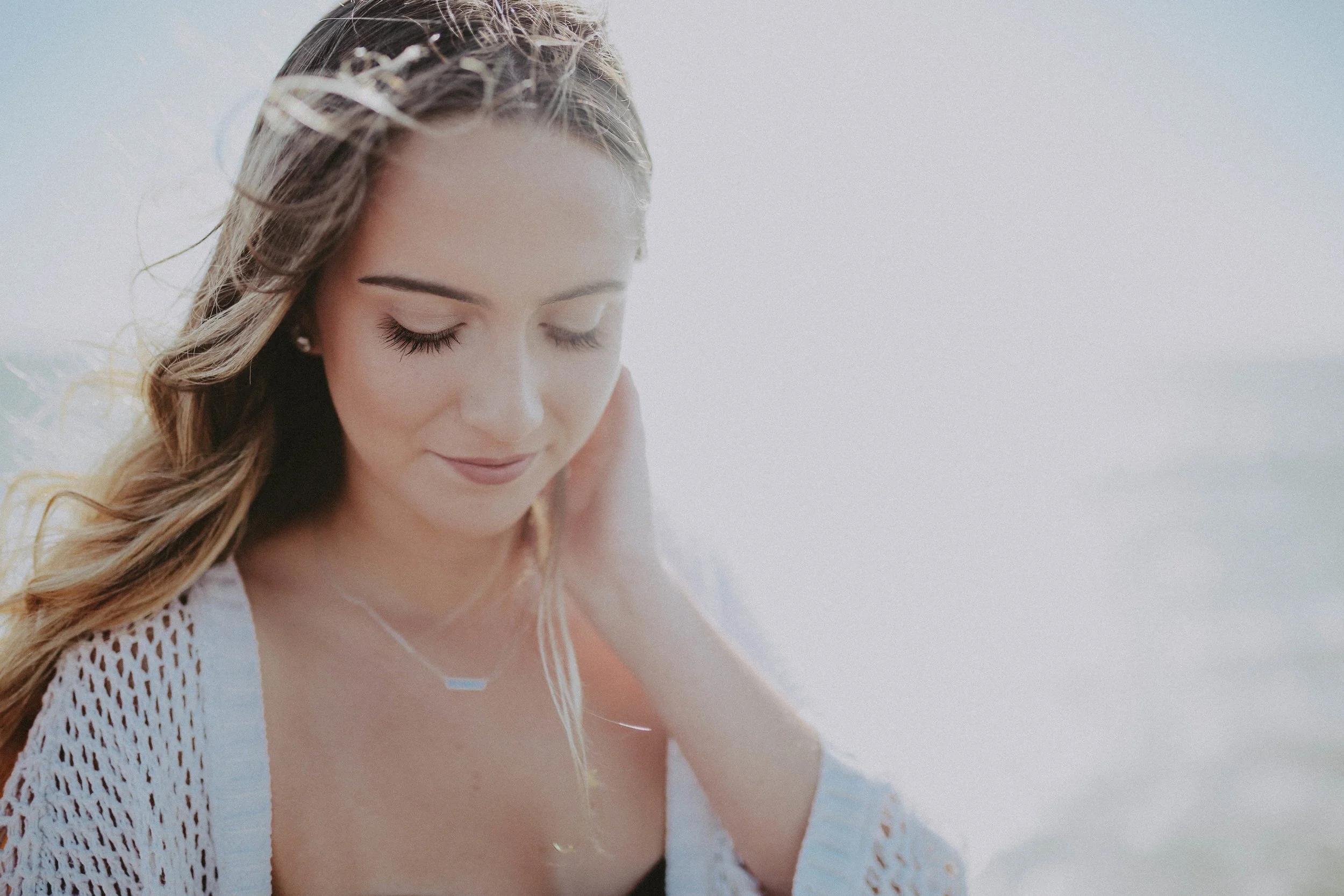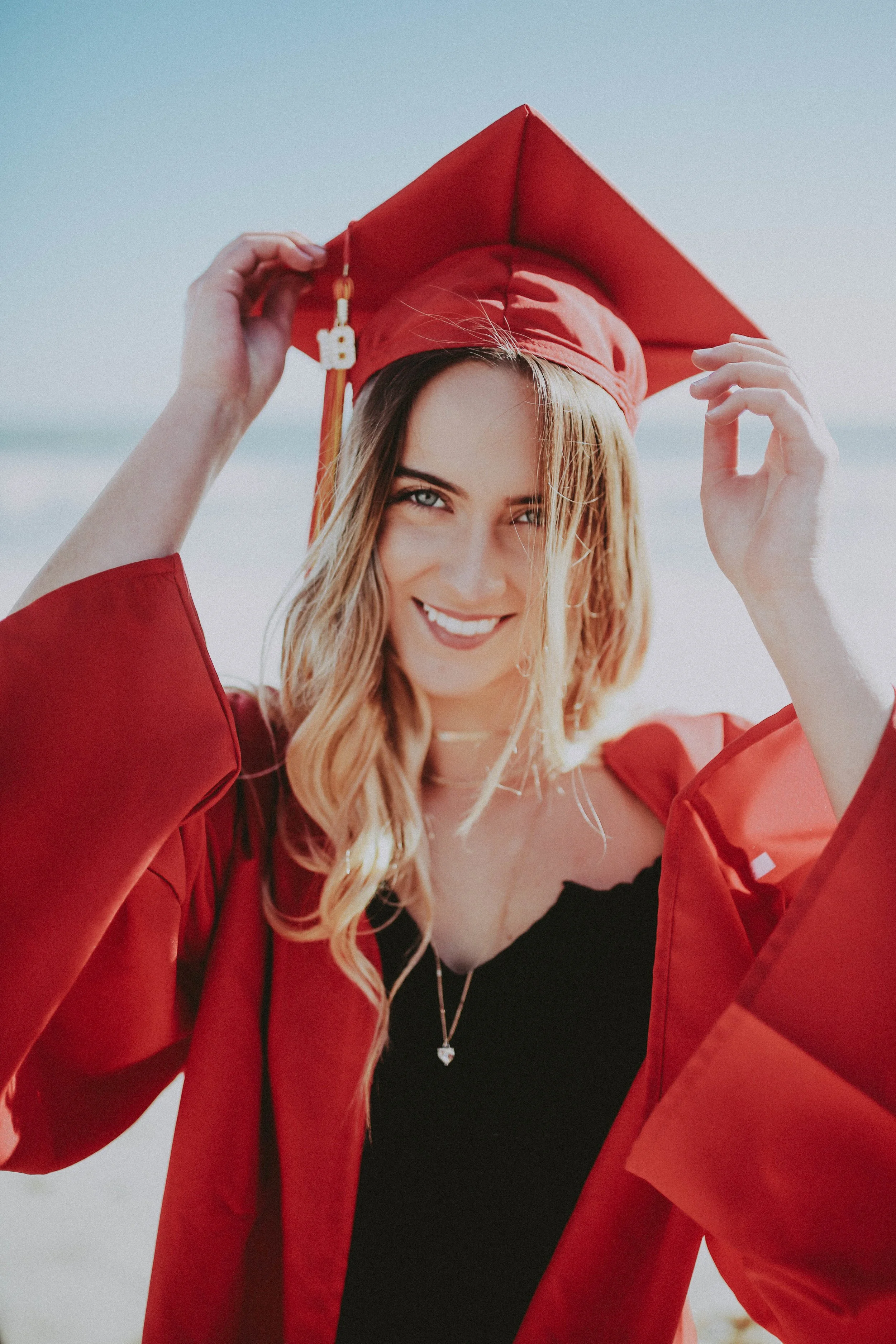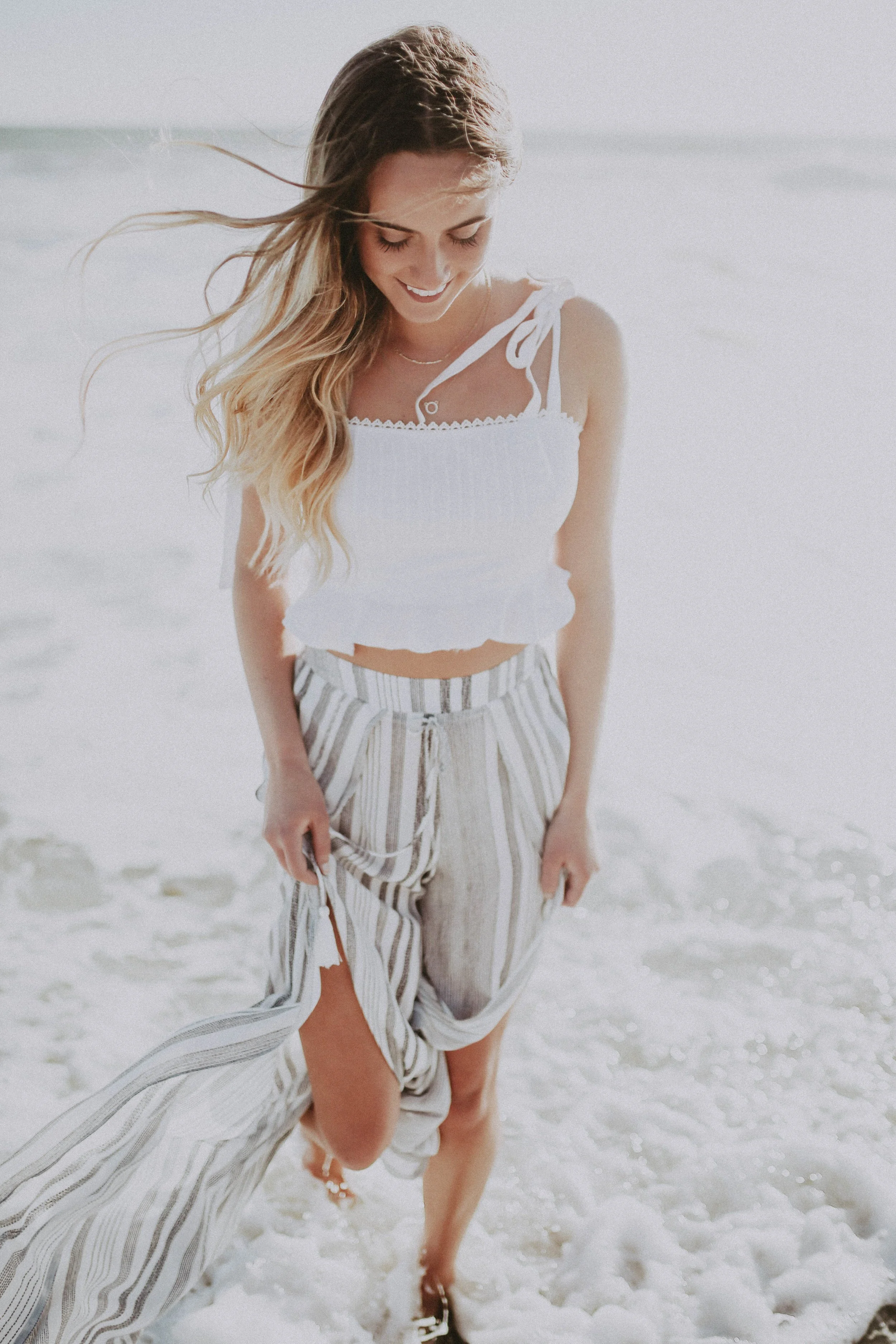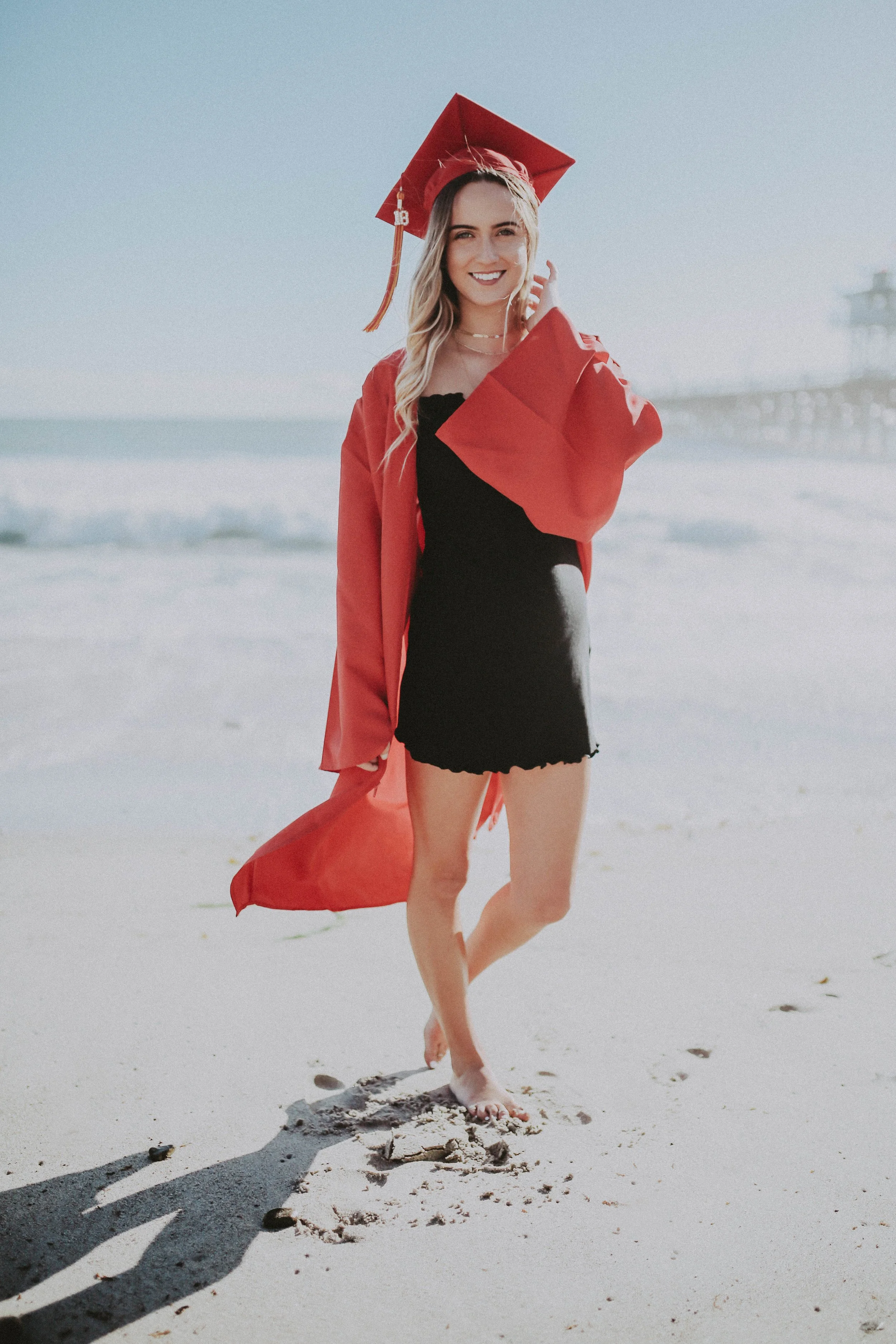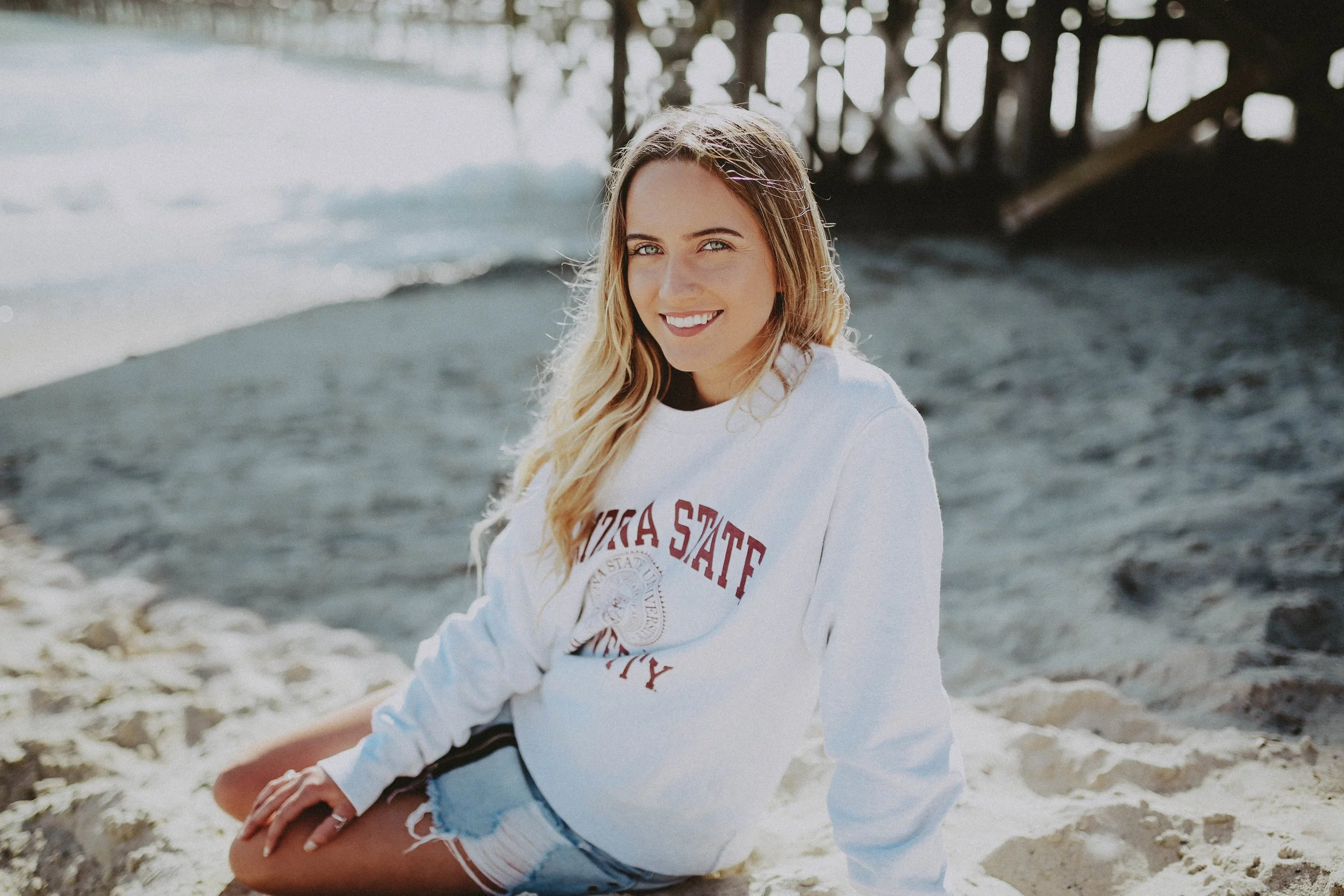featured post
EDUCATION5 Reasons To Niche To Senior Photography
Some call it a niche, some call it a focus…the important thing is that you choose one based on what supports your growth as a business owner AND your creativity as an artist.
How to Audit Your Senior Posing Flow in 6 Steps | Senior Photography Education
Having a senior posing flow can be a game changer for a senior photographer. Check out these 6 ways you can audit your posing flow to make your senior photo sessions a breeze!
Having a senior posing flow changed the game for me as a senior photographer. I used to get a bit nervous before sessions, print out entire posing sheets, and scramble through Pinterest inspo before a session — only to forget it all once we started. Leaning on shortcuts, like a posing app or storing pose inspo on my memory card, wasn’t cutting it either. Having a posing flow means being able to nail LOTS of different poses with a degree of speed that keeps the client comfortable (which should be a huge priority for senior photographers) and most importantly, creates killer results. A well-developed posing flow is like a built-in guide in your mind that guarantees each session, no matter the time limit or circumstance, will lead to happy clients who love their images.
A senior photographer’s posing method begins well before the session takes place. Use the following questions to assess whether or not your senior posing flow needs a revamp.
1. Prep
Is your posing expertise communicated in the inquiry, discover, prep, & check-in phase of your senior photography experience?
Posing starts waaaaaaay before the photo session. Before physically posing the client, it's important to mentally and emotionally check-in with their expectations around the session in general. This is the perfect opportunity for you to be their trusted advisor, their guide, the expert in their photography experience. Don't miss out on these important pre-session touch points.
2. Kickoff
What are you SAYING before you start DOING? How do you establish yourself as the trusted guide? Do you show the back of the camera? What pose do you start with?
Start with the same base pose and/or introductory phrase:
"You couldn't mess this up if you tried!"
"Remember, I'm going to tell you exactly what you need to do."
"Let's start with some easy, no-pressure warm-up poses."
The number one thing on your client’s mind when you first get started is probably something about being nervous, so help them feel safe and excited with a simple verbal reminder.
3. Language
Are you explaining the pose verbally or physically? Are you snapping photos in silence? Are you using positive, proactive language when redirecting your clients?
If your plan going into sessions is to stay quiet behind the camera and wait for your client to figure it out, think again! Try to fill almost every moment with verbal affirmation, positive/constructive adjustments, and of course, physically demonstrating the pose as well.
Remember, these clients don't have a mirror, and they can't always see the back of your camera! All they see is a photographer with a big camera pointed at them. How are they going to know how it's looking if you don't tell them? Communication is non-negotiable for a positive client experience.
4. Expectations
Are you establishing expectations early and clearly?
Establishing expectations as they relate to posing includes:
Where to park and meet you
Who should come to the session
What parents or guests do during the session
How you’ll be directing the client today
Choosing poses according to both parent & senior preferences
Remember, we serve TWO clients: parent and senior. Be sure to have clear approaches to making each party feel catered to and taken care of.
5. Variations
Do you spend several minutes setting the client into a pose, only to snap a bunch of the same base pose without taking advantage of the variations available?
Are you posing your clients, prompting them, or both?
How do you change your posing flow between girls, guys, twins, young teens, and larger groups?
Are you leveraging the posing power of props during your senior sessions?
Even the slightest change to add variations can be the difference between a regular photo session that simply satisfies the client and an amazing senior photo session that has your client posting your images, leaving you rave reviews, and insisting their friends and family book with you ASAP!
6. Style
How are you making your poses unique to your photography style? Do you enjoy posing your clients? How often are you trying out what inspires you?
"No one is you, and that is your power"
The best poses will reveal themselves over time. At first, maybe by accident, but eventually you'll start to see patterns in your work and realize, "hey, that's kind of my thing! I love it!" Of course in our world it's easy to find ideas and be inspired by others, but don't forget to also look inward, take time to rest and recharge your creative battery, and try new things with willing clients or your model team.
Not only will having a solid posing flow allow you to show up to your sessions confident that you can trust yourself and nail it, but your clients will feel it, too. Every client is different and will require different degrees of guidance, and every location, weather scenario, and session differs, too. Having a flow means having an ADAPTABLE method, rather than using the same reference sheet for each and every client. They’ll see your confidence and expertise during the session, and be wowed by the results in their photos. Happy clients lead to the most valuable result of them all: warm, eager, trusting word-of-mouth referrals!
Ready to take your senior photography to the next level? With a solid senior posing flow and my 9-piece posing kit, you’ll be unstoppable! Download the posing kit here for free.
Is Wind Bad for Photo Shoots? My Secrets to Windy Success
Ever wondered how to handle a windy photoshoot? It's important to realistically evaluate whether or not weather will make or break a photo session. But how do you, as a photographer, know? Or, how can you, as a client, trust that your photographer knows what's best?
There's nothing like waking up on the day of a photo shoot (for both the photographer and client alike) to some of Earth's bravest elements making their presence known.
Whether it's rain, snow, extreme heat or wind, a natural light photographer is always at the mercy of the natural elements.
Here is the good news, though: as a photographer, you can learn how and when to either discern a reschedule or adapt to the weather—a decision that depends on the client, the type of shoot, and of course, YOU!
The Client
Recall their vision
If your client has specifically requested photos with sunbeams streaming through the trees, a brilliant sunset, or perfectly placed hair for their shoot, you have to ask yourself a few things:
Are the client's desired circumstances realistic in my area, given its climate?
Can I add these desired elements in post-processing to give the client what they're hoping for? Will this be relatively doable or will it take up a huge amount of time?
Be Honest
Communication is always keys with your subjects—before, during, and after a photo shoot. In the event that less-than-ideal weather occurs, it's important to contact them sooner than later and present them with your options:
We continue with the shoot and try to use the elements to our advantage.
We change locations, if possible.
We reschedule, but pose the risk of similar circumstances happening again, and of course, throwing both our schedules for a quick loop.
The Type of Photo Shoot
Depending on the type of shoot a client has booked, some situations might be more flexible than others. For example, if we're talking about a wedding, that bride is most likely walking down the aisle rain or shine. I once saw photos of a wedding where the ceremony was completely, 100% outdoors, and it absolutely poured rain. This was in sunny Southern California, mind you. The coolest thing about the photos, though, is you could tell that the bride and groom could not care less. They were beaming. Soaking wet...but beaming...as were their guests and bridal parties. It was truly a moment, and a shining example that what's meant to happen, will happen, and there's something really wonderful about embracing that regardless of the physical circumstances.
Other shoots that tend to be set in stone:
Large family portraits
Event photography
Indoor photography (not having to worry about weather is a definite perk of shooting indoors)
On the other hand, other types of shoots can be more flexible:
Graduation photography
Headshots
Smaller family photos
Portrait sessions
Engagement sessions
In these instances, it (again) comes down to the client and their initial vision. Unless the client is traveling for this specific date, it's important to realistically evaluate whether or not the weather will make or break the photo shoot.
But how do you, as a photographer, know? Or, how can you, as a client, trust that your photographer knows what's best?
Trusting the Photographer
When it comes time to shoot, control is (and should be) in the hands of the photographer. It is not only a right but also a responsibility of the photographer to communicate clearly with the client, therefore understanding their needs, and being able to discern what scenarios will deliver gorgeous shots to a happy client.
I'd like to walk you through an example of a situation where I didn't have a whole lot of time to make this decision. What I thought was a beautiful, perfect, sunny day at the beach turned out to be extremely windy when I arrived.
Client: Kiley
Sweet as can be, requested confetti, but made it clear that she was open to ideas from me in terms of location, shots, etc.
Type of Shoot: Senior Photos
Could we have met at the pier like we planned and decided to reschedule? I suppose. But I really didn't see the point in doing that, and here's why:
The Photographer:
This wasn't my 'first rodeo' so to speak. I have shot in wind before, and I had actually shot in much, much windier conditions that what I was experiencing with Kiley. I knew I could use a few tricks to get shots that both leveraged the wind to our advantage, and also get shots where we were out of the wind entirely. I proceeded to:
Place Kiley according to the sun first, and the wind second. After making sure her back was primarily to the sun, which allows the light to drape over her shoulders and face (instead of it blaring into her front side), I had her turn her shoulders toward the direction of the wind slightly. In essence, back to the sun, face to the wind.
Take as many shots as I could, because her long (beautiful) hair had a mind of its own. There were many shots I couldn't use due to large chunks of her hair blocking major parts of her face, like her eyes or smile.
Encourage Kylie that even though she feels like her hair is doing crazy things and her eyes are watering a bit, she looks stunning and the shots are reflecting that.
I also had an assistant with me at this shoot use a reflector to brighten up her front side when she was really turned from the sun. It's okay if you aren't able to do this—but if you can, try it!
Find spots that are blocked from the wind. We were shooting in San Clemente, so we explored areas under the pier and found some calm, serene spots that were perfect for getting more still shots.
Note: I have shot in areas where there's absolutely nowhere to hide (like an open field, for example). If that's the case, take your time. Explain to the client that you'd like to wait for the wind to die down and once it does (if it does), snap like crazy.
Overall, so cheesy, but honestly - just have fun. The wind can be really, really beautiful because motion makes photos less posed and more moment-based. Sometimes windy, hair-framing-the-face-like-medusa-but-better shots are my favorites because of their power!
P.S. Kylie even said she was *happy* we shot in the wind because she wanted her curls to fall a little bit. HA! Win.
In Summary
Hope this helps! Just remember, with time and experience you (as the photographer) will be able to discern whether or not weather is going to make or break a photo shoot. Clients, I encourage you to have an open mind about weather, and when choosing inspiration photos for your shoot, try to include photos with all types of weather (cloudy, windy, sunny, even rain!) This will mentally prepare you for just about anything.
Lastly, dear photographer and dear client, communicate. It just never hurts.
Ready to Book More Seniors?
it Starts with Reps!
You’ll learn 5 tips to help you get started with your very own senior rep program—my secret one-way ticket into full-time senior photography bliss.

KICK IMPOSTER SYNDROME TO THE CURBREADY TO LEARN HOW TO POSE SENIORS IN WAY THAT FEELS Natural & HELPS YOUR WORK Stand out FROM THE CROWD?
Stop scrambling to come up with your next pose idea and instead lead your senior sessions with confidence — without memorizing complex poses and prompts.
No more feeling clueless when it comes to posing flows, it’s time to kick the pre-shoot anxiety and create jaw-dropping images your clients love, every time.















